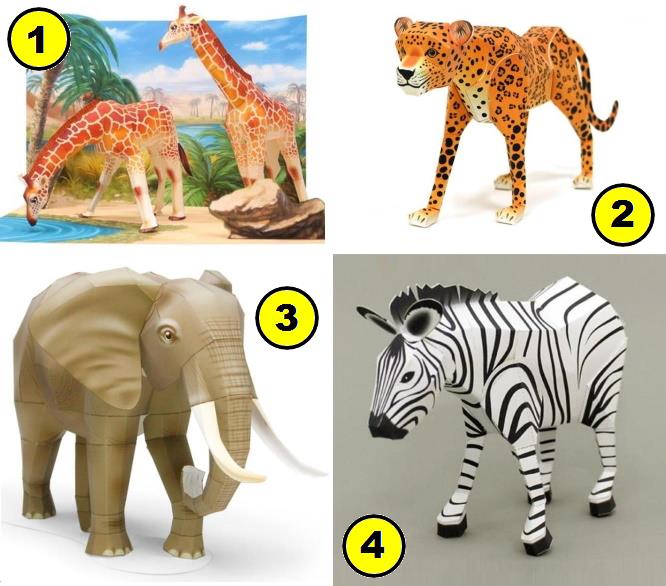I'm working on this Tatebanko of Van Gogh's painting Starry Night, and here you can get an idea of how it will look when finished.
To create this Tatebanko, I took a high-resolution image of this painting and opened it in MS Paint.
Then, using the crop tool, I separated various parts of the painting that I thought would look good in relief.
After that, I drew the display box, also using MS Paint and using the dimensions of the painting itself as a reference for size.
I separated the pieces into several sheets and opened everything in Sketchup to do a virtual test assembly, to see if everything fit together and if the effect would be pleasing to the eye.
The result you can see in the images that illustrate this post, and it's as far as I've progressed so far. More coming soon.
Vincent van Gogh's painting Starry Night is a masterpiece of post-impressionist art, painted in 1889. It depicts the nighttime view from Van Gogh's window at the Saint-Rémy-de-Provence asylum in France.
The painting is characterized by its vibrant use of colors, expressive brushstrokes, and tumultuous representation of the starry sky.
Van Gogh created Starry Night based on his personal observation of the night sky. He wrote several letters describing his fascination with the starry sky and the crescent moon during his time at the asylum.
In addition to portraying the actual landscape, Starry Night also expresses the artist's emotional turmoil. Van Gogh painted the scene during a period of deep melancholy and emotional instability, reflecting his own internal conflicts in the turmoil of the night sky.
Starry Night is distinctive for Van Gogh's unique style, with thick and visible brushstrokes, creating a sense of movement and energy.
This technique contributes to the dynamic and emotive atmosphere of the work, making it one of the most recognizable and revered paintings in art history.
Tatebanko is a traditional Japanese art form that involves creating miniature scenes within a paper box or structure.
These scenes are meticulously cut and layered to create a three-dimensional illusion when the box is viewed.
Tatebanko is often used to represent landscapes, historical settings, or traditional Japanese scenes and is appreciated for its beauty and craftsmanship.
Tatebanko is a centuries-old art form. While it doesn't date back thousands of years like some older Japanese art forms, Tatebanko has a considerable history dating back several centuries.
Its popularity grew especially during the Edo period (1603-1868) in Japan and has since been appreciated and practiced as a traditional art form.
Estou trabalhando neste Tatebanko da pintura Noite Estrelada, de Van Gogh e aqui vocês podem te ruma idéia de como ele vai ficar depois de pronto.
Para criar este Tatebanko, eu peguei uma imagem em alta resolução deste quadro e abri no MsPaint.
Então com a ferramenta de recorte fui separando as várias partes da pintura que achei que ficariam boas se fossem em alto relevo.
Depois desenhei a caixa de exposição, também usando o MsPaint e usando como referência para o tamanho, as próprias dimensões da pintura.
Separei as peças em várias folhas e abri tudo no Sketchup para fazer uma montagem de teste virtual, saber se tudo se encaixava e se o efeito seria agradável ao olhar.
O resultado vocês podem ver nas imagens que ilustram este post e é até onde avancei até agora. Mais em breve.
O quadro Noite Estrelada de Vincent van Gogh é uma obra-prima da arte pós-impressionista, pintada em 1889. Retrata a vista noturna da janela do quarto de Van Gogh no asilo de Saint-Rémy-de-Provence, na França.
A pintura é caracterizada por seu uso vibrante de cores, pinceladas expressivas e a representação tumultuosa do céu estrelado.
Van Gogh criou Noite Estrelada baseado em sua observação pessoal do céu noturno. Ele escreveu várias cartas descrevendo sua fascinação pelo céu estrelado e a lua crescente durante seu tempo no asilo.
Além de retratar a paisagem real, Noite Estrelada também expressa a turbulência emocional do artista. Van Gogh pintou a cena durante um período de profunda melancolia e instabilidade emocional, refletindo seus próprios conflitos internos na agitação do céu noturno.
Noite Estrelada é distintivo pelo estilo único de Van Gogh, com pinceladas grossas e visíveis, criando uma sensação de movimento e energia.
Essa técnica contribui para a atmosfera dinâmica e emotiva da obra, tornando-a uma das pinturas mais reconhecíveis e reverenciadas da história da arte.
Tatebanko é uma forma de arte japonesa tradicional que envolve a criação de cenas em miniatura dentro de uma caixa ou estrutura de papel.
Essas cenas são meticulosamente cortadas e expostas/sobrepostas em camadas para criar uma ilusão tridimensional quando a caixa é observada.
O Tatebanko é frequentemente usado para representar paisagens, cenários históricos ou cenas tradicionais japonesas, e é apreciado por sua beleza e detalhamento artesanal.
O Tatebanko é uma forma de arte centenária. Embora não remonte a milhares de anos, como algumas formas de arte japonesas mais antigas, o Tatebanko tem uma história considerável que remonta a várias centenas de anos.
Sua popularidade cresceu especialmente durante o período Edo (1603-1868) no Japão, e desde então tem sido apreciado e praticado como uma forma de arte tradicional.




























